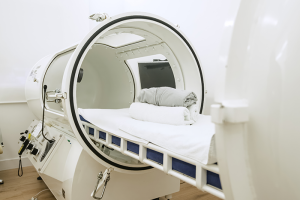ASHE successfully defends vote on remote damper inspection
The American Society for Health Care Engineering’s (ASHE’s) Advocacy Team helped to secure a vital win for patient safety at a recent National Fire Protection Association (NFPA) council meeting.
The issue at hand concerned damper inspection requirements in the 2025 editions of NFPA 80, Standard for Fire Doors and Other Opening Protectives, and NFPA 105, Standard Smoke Door Assemblies and Other Opening Protectives.
During the NFPA 2024 Technical Meeting, NFPA members voted to remove the visual inspection requirement for fire/smoke dampers every 18 years in cases where hospitals utilize remote monitoring methods instead. However, a group appealed and sought to overturn the voting results to include a revision requiring a visual inspection of certain dampers once every third testing and inspection cycle.
After hearing testimony on the matter from both sides, the NFPA Standards Council voted to deny the opposing group’s appeal and uphold the NFPA Technical Meeting vote.
According to Chad Beebe, AIA, CHFM, CFPS, CBO, FASHE, deputy executive director of ASHE regulatory affairs, this win on behalf of ASHE members and the health care facilities management field is significant because it can help limit patients’ exposure to hazards like Aspergillus spores, which can be released during routine visual damper inspections. Remote inspections were introduced in the 2019 editions of NFPA 80 and NFPA 105, and the removal of visual inspections where remote inspections are used signals a positive step toward more efficient and safer practices.
“With room pressurization, air changes and filtration, health care facilities keep things like Aspergillus in the patient care environment to a minimum,” Beebe says. “But if an inspector comes along and opens a ceiling tile, that can release spores into the environment. Having this proposed revision struck down was a great step in the right direction.”
Beebe says this will also help health care facilities save money on unnecessary, routine visual inspections. ASHE estimates that the health care field would have spent a collective $9.7 million every 18-year cycle to conduct visual inspections. Those funds can now be directed toward other infrastructure investments and patient care.




